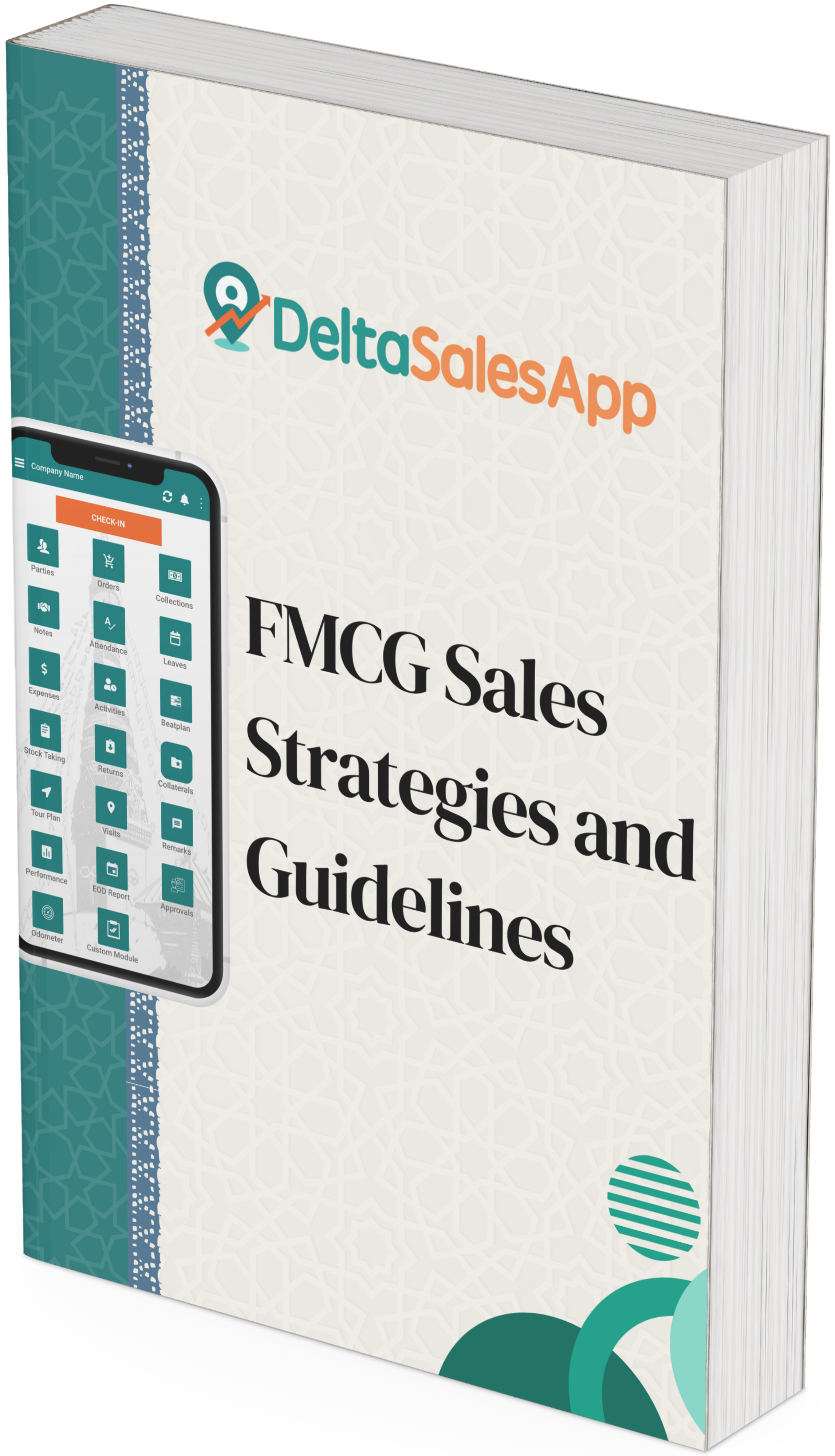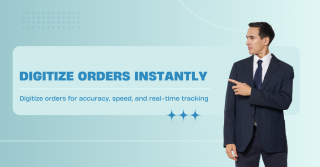Top 6 Trade Promotion KPIs to Maximize Store Success

Driving product visibility, consumer interaction, and in-store income mostly depends on trade promotions. But brands execute campaigns in the dark—uncertain of what's really working or where revisions are needed—without the appropriate trade promotion KPIs in place.
Monitoring success outside of sales numbers helps create a better plan that might change with time. Here, a good set of trade promotion KPIs becomes absolutely vital. These six KPIs will provide you a comprehensive picture of success—and areas that need work—should you wish to improve the way your team runs and assesses in-store campaigns.
Let's dissect the key trade promotion KPIs any brand should keep an eye on to guarantee every dollar invested generates quantifiable value and improve campaign performance.
1. Sales Made during a Promotion
Fundamentally, monitoring the sales created throughout a campaign provides you with a first assessment of success. Has the advertising shifted more units? Did the effort draw additional clients through the door?
Although this trade promotion KPI provides a good picture, it is only one piece of the jigsaw. Alone, a sales boost does not always equate to success. Were profits, for instance, balanced by expenses? From another SKU in your catalogue, did the campaign pull sales?_1745491916.png)
Start with this statistic; it will be useful for side-by- side campaign comparison and for spotting transient sales spikes.
2. Small Sales Lift
Emphasise incremental sales lift—the rise in income directly attributable to your trade promotion—over and beyond your projected baseline to better grasp actual campaign impact.
This is a crucial trade promotion KPI that provides the solution: without this campaign, what would have sales looked like?
You may determine whether your campaign actually added value or merely cannibalised normal demand by matching historical sales data with actual promotional results. Usually, high incremental lift points to a timed and well-executed plan.
Formula: Campaign Revenue – Baseline Sales – Incremental Sales
3. Trade Spend Optimization
You have to take into account the expense of creating those sales in addition to simply selling more. Tracking trade expenditure becomes hence a fundamental trade promotion KPI.
Every discount, show, cooperative fund, and marketing effort has a cost. Finding your overall trade spend and matching it to your sales lift will help you to clearly understand return on investment (ROI). You want to be sure the effort was profitable rather than merely increasing volume.
Review trade data across several promotions using technologies like Field Sales Force Automation systems that link expenditure tracking with performance analytics to find trends and maximise future spending.
4. Time and Effort Paid for
Many companies ignore the operational work underlying promotions, particularly with regard to labour hours. This often underappreciated trade promotion KPI helps to address: How effective was our team over the campaign?
If a promotion calls for too many hours from your field teams, even one that is effective can drain resources. Monitoring the time spent by support personnel, merchandisers, and representatives points out areas needing automation, improved planning, or simplified execution._1745491932.png)
Incorporating Field Sales Force By considerably enhancing labour tracking, automation systems enable teams to effectively allocate time and reduce waste of resources by means of their application.
5. Orders Placed throughout the Campaign
Often disregarded trade promotion KPI offers insight into logistical readiness and demand predictions. Did your effort produce the anticipated volume of orders? Were stores kept suitably stocked?
Examining orders lets you find out how closely your internal team projected interest, how precisely sales representatives performed, and how well your inventory and fulfilment systems worked.
Should real orders come short, it could indicate a planning flaw or indicate that the promotion did not have the desired impact.
6. Cannibalising Rate
Here is when things turn strategically. Cannibalisation is the process wherein the success of a promoted product compromises another item in your catalogue. Though complex, this is a necessary trade promotion metric.
Although the sales of one product are outstanding, you should make sure you are not compromising the general performance of your brand. For a new flavour, for example, did the discount lower demand for your flagship product?
Using SKU-level and category-level data helps track this KPI and preserve brand balance, enhance pricing policies, and guide bundling decisions. By means of real-time sales visibility, tools with Field Sales Force Automation enable brands to identify these trends early on.
To sum it up: more intelligent promotions. Start with smarter trade promotion. KPIs for
Trade promotions have great power, but only when they support smart data. While tracking just one or two trade promotion KPIs may provide a cursory picture, including all six guarantees a complete approach to promotion success.
By keeping an eye on:
- Generated Sales
- Sales Lift Incremental
- Trade Spend Accuracy
- Time and Effort Paid for
- Orders Made
- Rate of Cannibalism
You will uncover more profound insights, streamline next promotions, and increase campaign return on investment.
FAQs
Q1 Why are trade promotion KPIs really important?
KPIs for trade promotion are particular performance indicators used to evaluate in-store and B2B marketing initiatives. Beyond merely monitoring sales, these KPIs enable companies to assess campaign return on investment, maximise resource allocation, and pinpoint the actual factors promoting expansion. It's tough to determine what's working and what has to be improved without them.
Which trade promotion KPIs should every brand monitor?
Six fundamental trade promotion KPIs are:
Sales Made during a Promotion
Subtle Sales Lift
Trade Spend Accuracy
Time and Effort Paid for
Orders Made
Cannibalising Rate
From both operational and financial points of view, these KPIs present a whole picture of the performance of a campaign.
Q3. In what ways may Field Sales Force Automation support trade promotion KPIs?
Real-time tracking of sales force activity, order placements, labour hours, and promotion execution made possible by Field Sales Force Automation (FSFA) solutions helps These systems allow companies precisely measure trade promotion KPIs, evaluate success across markets, and spot patterns right away by combining campaign data with analytics.
Q4. Could KPIs for trade marketing help to raise ROI?
Surely. Measurement of trade promotion KPIs such as trade expenditure efficiency and incremental sales lift helps businesses manage resources more wisely and guarantee that promotions yield profitable results. This results in better resource planning, enhanced general ROI, and improved forecasting over time.
Q5. How important is labour tracking and time to trade promotion success?
Usually disregarded expenses are time and effort. Following them in order to promote trade KPI clarifies for brands the actual cost of execution. Force in Field Sales Automation systems record travel paths, in-store time, field rep hours, and in-store time, therefore exposing inefficiencies and allowing better scheduling or automation possibilities.
Q6. In trade promotions, how can I spot cannibalisation?
Cannibalisation is the effect wherein the success of one SKU lowers the sales of another. By means of SKU-level reporting, Field Sales Force Automation systems enable brands to track category-level changes in real time and identify early warning signals of cannibalisation, therefore preserving their product mix and pricing balance.
Q7. How often ought trade promotion KPIs to be tracked?
KPIs in trade promotion should be tracked constantly throughout the campaign and examined right away following it. By means of automation tools such as FSFA, real-time visibility enables companies to quickly modify mid-campaign and maximise next campaigns depending on past performance.
All set to increase your game of trade promotion optimisation? Start monitoring these trade promotion KPIs now with Field Sales Force Automation solutions, which enable your teams to more effectively—and on scale—plan, run, and assess campaigns.









